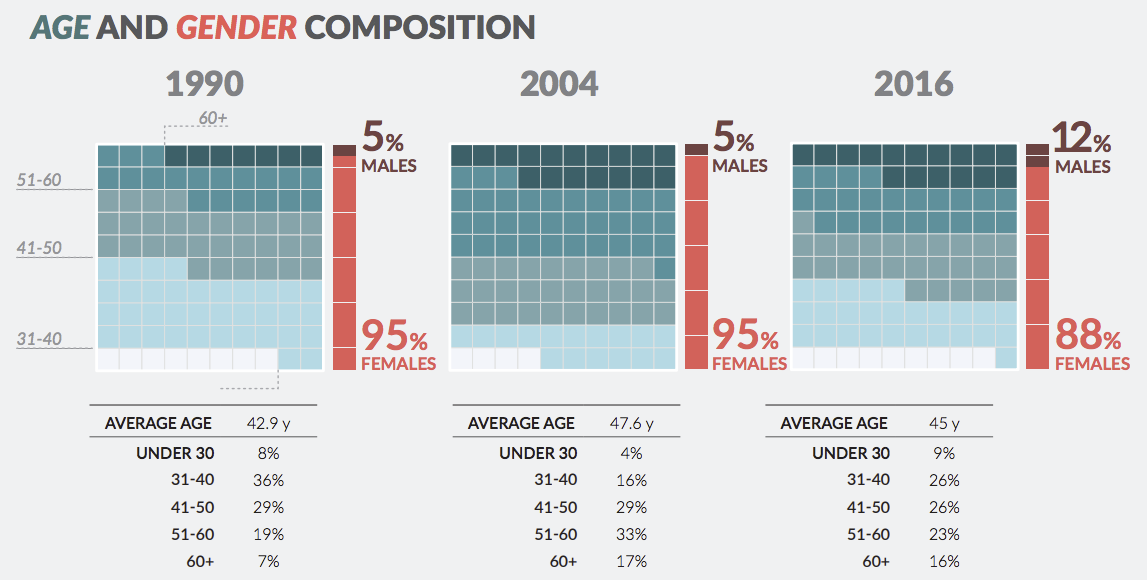The 2016 Survey of California Registered Nurses is the tenth in a series of surveys designed to describe the population of registered nurses (RNs) licensed in California and to examine changes in this population over time. Other studies were completed in 1990, 1993, 1997, and every two years since 2004. The 2016 survey was mailed to 8,000 RNs with active California licenses and addresses in the United States. The survey response rate was 53.5 percent, yielding information for about 4,178 nurses.
Below are some highlights from the survey results:
- Most of California’s registered nurses are currently employed in nursing positions, which are defined as positions that require an RN license. At the time of the survey, 86.2 percent of nurses with active licenses and California addresses were working in nursing. This is a higher employment rate than measured in 2014.
- There is some variation in employment rates according to region. Nurses living in the Border, Los Angeles, Central Valley and Sierra, Inland Empire, Sacramento, and San Francisco Bay Area regions are more likely to work than average, and nurses who reside in the Northern and Central Coast regions are less likely to be employed in nursing.
- Employment rates increased for all age groups between 2014 and 2016, except for RNs 60 years and older. The increases in the shares of nurses under 45 years old is a reversal of a trend toward lower employment between 2008 and 2014 and suggests that RN demand has recovered from the recession that began in December 2007. The drop in employment rates of nurses 60 years and older between 2010 and 2016 may be the result of the recovery of the stock market, which returned the retirement savings of many Americans to pre-recession levels.
- In 2016, 44.1 percent of nurses with active California licenses are 50 years or older. This percentage has declined from its high of 49 percent in 2008.
- Nursing continues to be predominantly female, although an increasing share of men has been entering the profession. Between 2004 and 2008, there was notable growth in the share of employed RNs that was male, from 7.4 percent to 14.4 percent. The share has declined slightly since then; in 2016, 11.9 percent of working RNs were male.

- Less than half of RNs with active licenses who reside in California are non-Hispanic White (49.8%), and Filipinos represent 17.6 percent of the RN workforce. Hispanic and Latino nurses account for 7.9 percent of the nursing workforce, and Asians who are not Filipino comprise 8.8 percent. Black/African-American nurses represent 4.3 percent of California’s active nurses.
- The diversity of RNs with active licenses living in California is more prominent among younger nurses. Non-Hispanic Whites account for less than half of RNs under 54 years of age. Filipino nurses represent nearly a quarter of nurses between ages 35 to 44 years (23.8%) and more than one-fifth of RNs 45 to 54 years old (20.6%). More than 10 percent of RNs under 45 years old are Hispanic/Latino. Non-Filipino Asians and Pacific Islanders account for more than 11 percent of nurses under 45 years old. The share of RNs that is Black/African-American is smaller among RNs under 45 years old (3.5%) than among older RNs

